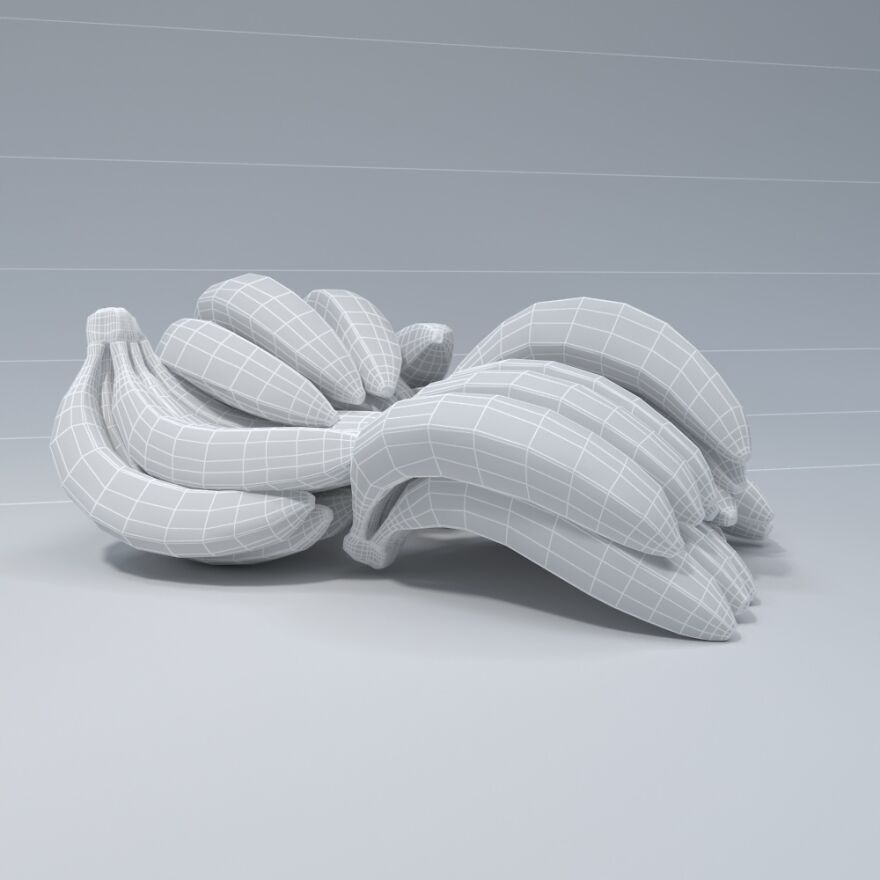I Brought A Banana To Life: My Adventure In 3D Rendering
As a digital artist, I am always looking for ways to push my skills to the limit and create something unique. So, when I stumbled upon the idea of 3D rendering a banana, I knew I had to give it a try. Little did I know that this small project would turn into an exciting adventure.
The first step was to gather reference images of bananas. I wanted to create a 3D model that was as realistic as possible, so I studied the shape, texture, and color of a variety of bananas. After sketching out some ideas, I used 3D modeling software to create the virtual banana.
It may seem like a simple task to create a 3D model of a banana, but there were several challenges that I encountered along the way. For example, I had to pay close attention to the curvature of the banana and the way it tapers at the ends. I also had to take into account the texture of the skin and the way the light would reflect off of it.
Once the 3D model was complete, it was time to add materials and textures to bring the banana to life. I carefully added different materials for the skin and the flesh, making sure that the texture was just right. I also experimented with different lighting setups to create a realistic shadow and highlights.
As I worked on the 3D rendering, I found myself becoming more and more invested in the project. It was no longer just about creating a banana, but about bringing it to life in a way that was both realistic and captivating.
Finally, after many hours of hard work, the 3D rendered banana was complete. I was thrilled with the final result. The banana looked so real that I almost wanted to reach out and grab it!
The process of rendering a 3D banana may seem like a small project, but it was an adventure in creativity and problem-solving. It taught me the importance of paying attention to even the smallest details, and the joy that comes from creating something that is truly unique.
In the end, I learned that 3D rendering is not just a technical process, but a creative one. It’s about bringing your imagination to life and pushing the boundaries of what is possible. And who knows, maybe next time, I’ll try rendering a whole bunch of bananas!
As a digital artist, I am always looking for ways to push my skills to the limit and create something unique. So, when I stumbled upon the idea of 3D rendering a banana, I knew I had to give it a try. Little did I know that this small project would turn into an exciting adventure.
The first step was to gather reference images of bananas. I wanted to create a 3D model that was as realistic as possible, so I studied the shape, texture, and color of a variety of bananas. After sketching out some ideas, I used 3D modeling software to create the virtual banana.
It may seem like a simple task to create a 3D model of a banana, but there were several challenges that I encountered along the way. For example, I had to pay close attention to the curvature of the banana and the way it tapers at the ends. I also had to take into account the texture of the skin and the way the light would reflect off of it.
Once the 3D model was complete, it was time to add materials and textures to bring the banana to life. I carefully added different materials for the skin and the flesh, making sure that the texture was just right. I also experimented with different lighting setups to create a realistic shadow and highlights.
As I worked on the 3D rendering, I found myself becoming more and more invested in the project. It was no longer just about creating a banana, but about bringing it to life in a way that was both realistic and captivating.
Finally, after many hours of hard work, the 3D rendered banana was complete. I was thrilled with the final result. The banana looked so real that I almost wanted to reach out and grab it!
The process of rendering a 3D banana may seem like a small project, but it was an adventure in creativity and problem-solving. It taught me the importance of paying attention to even the smallest details, and the joy that comes from creating something that is truly unique.
In the end, I learned that 3D rendering is not just a technical process, but a creative one. It’s about bringing your imagination to life and pushing the boundaries of what is possible. And who knows, maybe next time, I’ll try rendering a whole bunch of bananas!















1
0